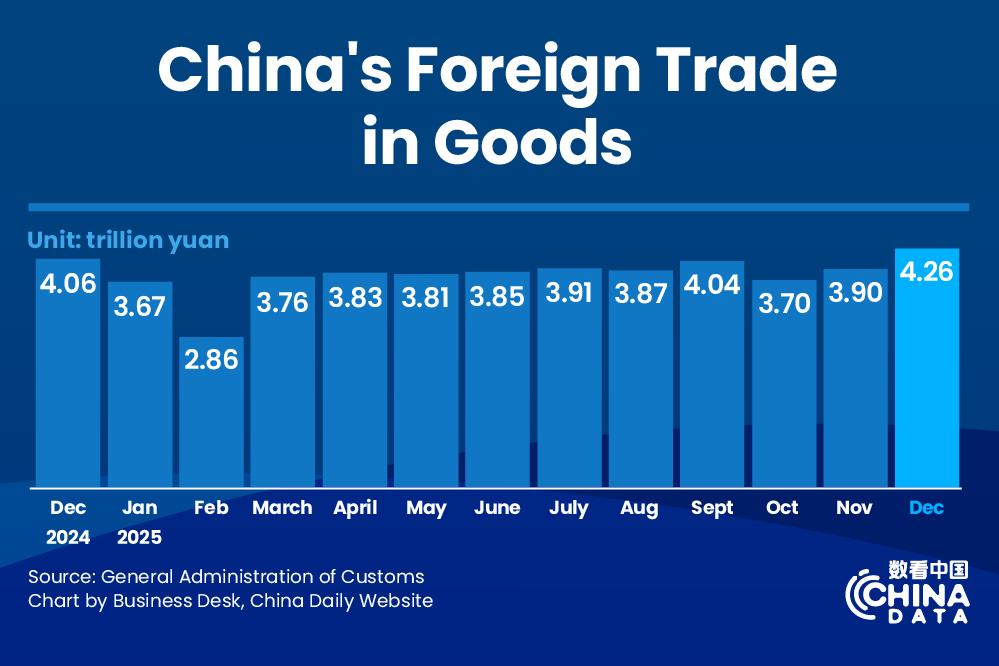Fiscal stimulus fighting economic headwinds


One difficulty with using fiscal stimulus is that most infrastructure spending needs to be implemented by local governments, but the tax cuts have limited their budgets.
Peschel said: "The challenge to local governments, which are responsible for the bulk of expenditures on health and education, is that they don't have the ability to generate additional revenue on their own and their debt issuance is controlled by the central government. It's a structural issue about how revenue is raised and spent by the central and local governments.
"The tax cuts, especially the cut in the value-added tax rates, have reduced local government revenue. Earlier this year, there were changes in the way the revenue raised from certain local government special bonds issuance can be used, thus giving them more leeway to spend on infrastructure."
Responding to this problem, the State Council, China's Cabinet, announced in October that the tax income redistribution between the central and local governments has been rebalanced so that local governments will receive 50 percent of VAT revenues, instead of the 25 percent they had been receiving.
Policymakers are also seeking to use monetary policy, cuts in interest rates and increases in loan availability, to stimulate additional corporate investment and consumer spending. However, these sectors are reluctant to increase debt.
In an October report, the IMF stressed the conflict between stimulating growth and reducing corporate debt. "In China, the effects of escalating tariffs and weakening external demand have exacerbated the slowdown associated with needed regulatory strengthening to rein in the accumulation of debt."
Moreover, the China Beige Book, a financial data company, reported a surge in shadow banking loans in the first half of 2019, reversing the drop in 2018 that was caused by a regulatory crackdown.
However, despite recent increases, debt levels still remain low by international standards.
"Government debt and consumer debt are still at reasonable levels. Corporate debt was addressed by the government in 2018, requesting State-owned enterprises to reduce their leverage, but of course in the current situation it is difficult for the companies not to incur a bit more debt if they are asked to help stabilize the economy," said Peschel of the ADB.
"If you look at the bond market, market participants usually perceive local government debt as safe and they therefore require only a small spread over the interest rate on central government bonds."
The traditional danger of expansionary monetary policy is that inflation will go up. However, China's core inflation rate remained low at about 2 percent. The recent increase in the reported rate of inflation from 2 percent last year to 3 percent this year is entirely due to a huge increase in pork prices caused by the African swine fever epidemic.
At a press conference in October, Victor Gaspar, director of the IMF's fiscal affairs department, said: "We very much welcome the contribution fiscal policy makes to the rebalancing of the economic growth model of China, especially where by increasing the purchasing power of consumers it fosters the move from exports to domestic demand and from investment to consumption, which is part of the transition of the growth model in China."
Similarly, Roman Wojdyla, general manager of Home Credit Consumer Finance Co Ltd, told China Daily earlier: "From our point of view, the most resilient part of the Chinese economy is its vast consumer market and the macro control exercised by the Chinese government."
Bottom line: 2019 is proving to be a challenging year for the Chinese economy. It continues its long-term reform toward higher value-added industry, a growing service sector and rising consumer demand while at the same time facing external challenges. In these circumstances, appropriate fiscal and monetary stimulus is maintaining growth and employment and facilitating reform.




































